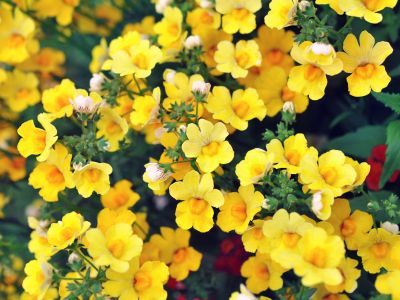What is Nemesia?
Nemesia is a small bedding plant with many uses in the garden. Use them as edging plants, ground covers, in mixed borders, woodland plantings and as container or hanging basket plants. Most varieties grow to about a foot (30 cm.) in height, but there are some that get as tall as two feet (60 cm.). These versatile little plants offer a wide range of flower colors, and some come in bicolors. The two most popular species are N. strumosa and N. caerulea. Both of these plants have several synonyms. N. strumosa is a true annual that produces 1-inch (2.5 cm.) blue or white flowers and grows up to a foot (30 cm.) tall. N. caerulea is a tender perennial in USDA plant hardiness zones 9 and 10, but it is usually grown as an annual. The half-inch (1.25 cm.) flowers bloom in purple, pink, blue, and white on plants that grow up to 2 feet (60 cm.) tall with a spread of about a foot (30 cm.).
Nemesia Growing Conditions
Learning how to grow Nemesia involves choosing a planting area where the soil is rich in organic matter and moist but well-drained. Too much water leads to stem rot. Full sun is best, but the plants bloom longer in warm climates if they get some afternoon shade. Additionally, Nemesia grows better when temperatures are cool. In areas with mild summer temperatures, they bloom from late spring until the first frost. In hot climates, they do well in early spring or fall, but flag in the heat of summer. You can grow the plants as winter annuals in frost-free areas.
Nemesia Plant Care
Older seedlings don’t transplant well. If you buy plants, choose those with a lot of buds but only a few open flowers to ease the transplanting stress. If you start your own seeds indoors, plant them in peat pots filled with vermiculite. When the seedlings are about 2 inches (5 cm.) tall, pinch out the growth tips to encourage a bushy growth habit. Transplant Nemesia into the garden when all danger of frost has passed, spacing them 4 to 6 inches (10-15 cm.) apart. Disturb the roots as little as possible and water deeply after transplanting. Add a layer of organic mulch to insulate the roots from extremes in temperature and help the soil hold moisture. Once established in the garden, the plants need little care except for watering to keep the soil moist. If the plants stop blooming, cut them back by one-third to bring them back into bloom.
